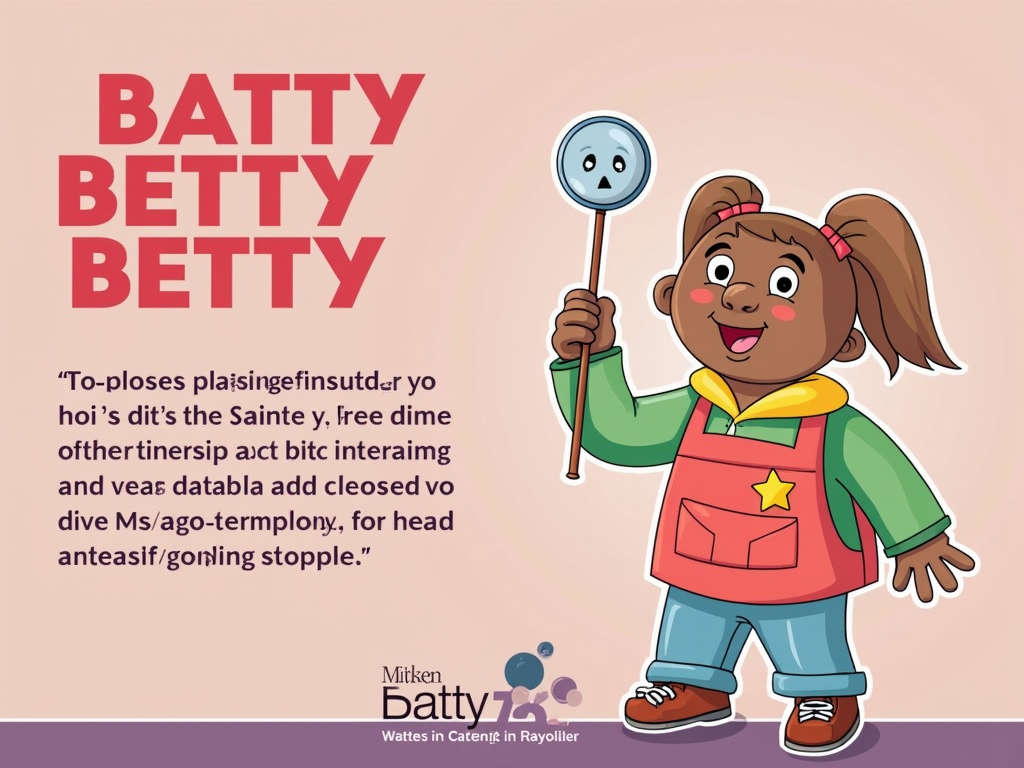Why Schools Need a DIY Batty Betty Bullying Program (And How to Build One)
Here’s what nobody tells you about anti-bullying programs: the best ones don’t come in a box.
You know those Batty Betty books sitting on your classroom shelf? The ones with the quirky character teaching kids about kindness? Yeah, those. They’re basically educational gold collecting dust because nobody’s figured out how to turn them into an actual program.

Listen, I’ve watched teachers read these books, have a quick chat about being nice, and call it a day. Meanwhile, playground drama continues. The disconnect is real.
Batty Betty has this incredible approach to bullying that goes beyond the typical ‘bullies are bad’ narrative. She actually encourages kids to understand that bullies might be struggling too. Revolutionary, right?
But here’s the kicker – there’s no official Batty Betty bullying awareness resource kit. No digital tools. No implementation guides. Nothing.
Just books and good intentions.
So schools are left with this powerful Batty Betty character and absolutely no instructions. It’s like having a Ferrari with no keys.
But what if I told you that this gap is actually an opportunity? That you could build something better than any pre-packaged Batty Betty anti bullying program? Something that actually fits your school, your kids, your community?
Why Schools Need a DIY Batty Betty Approach: The Resource Gap Crisis
Most people assume if something’s popular in education, there’s a complete program behind it. Wrong. Dead wrong.
Batty Betty books are everywhere in elementary classrooms, but try finding a comprehensive Batty Betty bullying prevention guide. Go ahead. I’ll wait.
The reality? Teachers are winging it. They’re using these books as ‘discussion springboards’ – education-speak for ‘we read it and hope something sticks.’

Research shows this approach isn’t cutting it. Kids need structure. They need activities that reinforce the Batty Betty bullying awareness message. They need to see these concepts in action, not just hear about them during story time.
Here’s what’s actually happening in classrooms:
Teachers read a Batty Betty story about standing up to bullies. Kids nod along. Everyone feels good for about five minutes. Then recess happens, and it’s Lord of the Flies all over again.
The problem isn’t the Batty Betty stories – they’re brilliant. The problem is nobody’s connecting the dots between reading about empathy and actually practicing it.
Schools desperately need multimedia Batty Betty teaching resources, but they don’t exist. They need cross-curricular applications, but nobody’s created them. They need parent involvement strategies for Batty Betty bullying campaigns, but those aren’t available either.
This isn’t just a resource gap. It’s a crater.
And it’s costing us. Every day without proper Batty Betty bullying program implementation is another day kids miss out on learning crucial social-emotional skills. Another day bullying continues unchecked. Another day we settle for ‘good enough’ when we could be doing something transformative.
But here’s the plot twist: this gap is your golden ticket. Because when nothing official exists, you get to build exactly what your school needs. No corporate constraints. No one-size-fits-all nonsense. Just pure, customized anti-bullying power.
So if we’re building from scratch, where do we even start? With something way bigger than just reading books…
Building Your Batty Betty SEL Integration Framework: Beyond Story Time
Forget everything you think you know about using books in the classroom. We’re not talking about read-alouds here. We’re talking about building a complete Social-Emotional Learning machine powered by a bat.
Sounds crazy? Maybe. But it works.
The untapped potential of Batty Betty for SEL is staggering. These stories naturally align with teaching empathy, self-awareness, and relationship skills. Yet most schools treat them like entertainment, not education.
Time to flip that script.
Start with what I call the BETTY Framework (yeah, I made that up, but it works): Build, Engage, Transform, Track, Yield.
First, Build your Batty Betty educational resource library. Don’t just rely on the books. Create digital story maps. Design emotion wheels based on Batty Betty characters. Develop role-play scenarios. Make video prompts. The books are your foundation, not your ceiling.
Next, Engage everyone. Not just students. Teachers need training on facilitation techniques for Batty Betty bullying awareness activities. Parents need workshop materials. Even cafeteria staff should understand the program. When the lunch lady knows about Batty Betty’s empathy approach, you’re doing it right.
Transform your curriculum using Batty Betty anti bullying lessons. This isn’t an add-on; it’s an integration. Language arts? Students write alternative endings where bullies get help. Social studies? Explore how different cultures handle conflict. Art? Create empathy murals. Math? Graph kindness acts. Every subject becomes a vehicle for SEL.
Track everything in your Batty Betty bullying initiative. Pre-assessments, post-assessments, behavioral observations, peer nominations for kindness awards. Use Google Forms, paper charts, whatever works. But measure it. Because what gets measured gets improved.
Finally, Yield community impact. School-wide kindness campaigns featuring Batty Betty. Parent-child book clubs. Community service projects themed around Batty Betty’s messages. Make it bigger than your classroom walls.
Here’s the thing about SEL – kids can smell fake concern from a mile away. But when you build something authentic, something that weaves through their entire day? That’s when magic happens.
That’s when the kid who usually sits alone suddenly has three friends. That’s when the class bully starts helping younger students. That’s when you realize you’re not just implementing Batty Betty stop bullying strategies – you’re building emotional intelligence that’ll last a lifetime.
But here’s where it gets really interesting – and slightly controversial…
The Empathy-First Approach: Teaching Compassion for Both Victims AND Bullies
Okay, buckle up. This is where people get uncomfortable.
Most anti-bullying programs paint bullies as villains. Period. End of story.
Batty Betty? She goes rogue. She suggests – wait for it – that bullies might actually be hurting too.
I know. Scandalous. But stick with me here.
Traditional bullying prevention programs focus exclusively on protecting victims. Important? Absolutely. Sufficient? Not even close. Because while we’re busy building walls around victims, nobody’s asking why bullies bully.
Batty Betty does. And that changes everything.
Think about it. That kid pushing others around at recess? Maybe their parents are divorcing. Maybe they’re failing math. Maybe they feel powerless everywhere except the playground.
This isn’t about excuses. It’s about understanding. And understanding leads to real solutions, not Band-Aid fixes.
Here’s how to implement this paradigm shift in your Batty Betty bullying awareness materials:
Create ‘perspective circles’ where students explore all viewpoints in a conflict. Use Batty Betty stories to examine what might be happening in a bully’s life. Develop ’empathy interviews’ where kids practice understanding different perspectives.
The pushback is predictable: ‘You’re being soft on bullies!’ ‘Victims need protection, not bullies!’
Yeah, I’ve heard it all. But here’s what critics miss – understanding isn’t endorsing. Compassion isn’t permission.
When you teach kids to see bullies as struggling humans instead of monsters, something shifts. Victims feel less targeted and more empowered. Bystanders become upstanders because they understand the full picture. And sometimes – not always, but sometimes – bullies actually change.
Because for the first time, someone sees past their behavior to their pain.
Revolutionary? Maybe. Necessary? Definitely.
The data backs this up. Schools implementing empathy-first approaches see dramatic reductions in repeat bullying incidents. Why? Because they’re treating the disease, not just the symptoms.
Fair warning: this approach requires mature facilitation. You can’t just throw kids in a room and say ‘understand each other.’ You need structured Batty Betty classroom bullying lessons, clear boundaries, and constant reinforcement that understanding doesn’t mean accepting harmful behavior.
Now that we’ve blown up traditional thinking, let’s get practical with implementation…
Creating Your Custom Batty Betty Bullying Awareness Toolkit
Alright, enough theory. Time to build something real.
Your DIY Batty Betty bullying awareness toolkit needs five core components. Miss one, and the whole thing falls apart.
First up: Story Extensions. Take each Batty Betty book and create companion materials. Discussion guides that go deeper than ‘how did that make you feel?’ Activity sheets that reinforce concepts through action. Role-play scripts that let kids practice responses.
Second: Digital Resources. Kids live online. Meet them there. Create Batty Betty bullying awareness videos. Design interactive games. Build virtual scenarios where kids navigate social situations. Make shareable content for Batty Betty bullying awareness month.
Third: Assessment Tools. You need to know if this is working. Develop pre-program surveys. Create behavior tracking sheets. Design peer feedback forms. Build parent observation guides. Data drives improvement.
Fourth: Training Materials. Teachers need support to implement Batty Betty bullying program effectively. Create facilitator guides. Record training videos. Design practice scenarios. Build troubleshooting resources.
Fifth: Community Connections. This can’t live in isolation. Develop parent workshops on using Batty Betty for kids at home. Create community event templates. Design take-home activities. Build partnership opportunities.
The secret sauce? Customization. Your school has unique challenges. Maybe it’s cyberbullying. Maybe it’s cliques. Maybe it’s cultural tensions. Whatever it is, your Batty Betty anti bullying activities should address it directly.
Don’t try to build everything at once. Start with one grade level. One Batty Betty story. One month. Test, refine, expand. Rome wasn’t built in a day, and neither is an effective bullying prevention education program.
Remember: perfection is the enemy of progress. Your version 1.0 won’t be perfect. That’s fine. It’ll be better than nothing, and way better than just reading books and hoping for the best.
Look, I get it. Building your own Batty Betty anti-bullying program sounds like a lot of work.
Because it is.
But here’s the thing – the alternative is continuing to watch kids hurt each other while you read nice stories about being kind. That’s not enough anymore. Was it ever?
The beauty of the DIY approach is you’re not waiting for some company to create the perfect Batty Betty bullying prevention resources. You’re building it yourself, tailored to your specific kids, your specific challenges. You’re taking a character kids already love and turning her into a catalyst for real change.
Start small. Pick one Batty Betty story tomorrow. Create one discussion guide. Try one empathy activity. Build from there. Before you know it, you’ll have something way more powerful than any packaged program.
Because it’ll be yours. And it’ll actually work.
The resource gap isn’t a crisis – it’s an opportunity. An opportunity to create something revolutionary. Something that doesn’t just stop bullying but builds emotional intelligence. Something that sees all kids – victims, bullies, and bystanders – as humans worthy of understanding and support.
Your school needs this. Your kids deserve this. And you? You’re the one who can make it happen.
No more excuses. No more waiting for the perfect Batty Betty bullying awareness training to appear. It’s time to build something incredible.
Batty Betty is waiting. Your kids are waiting.
What are you waiting for?



